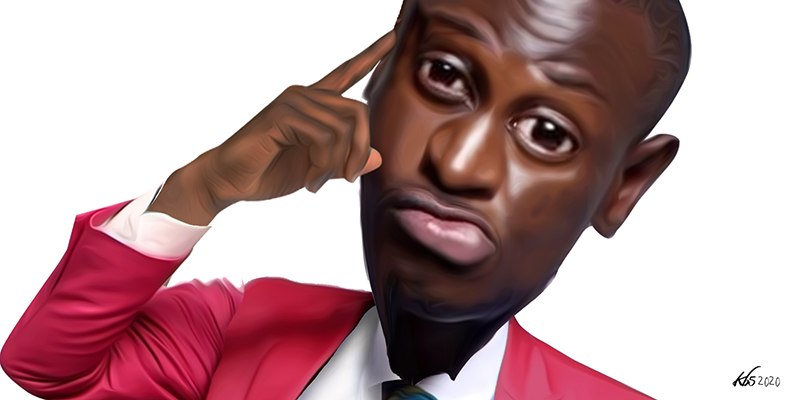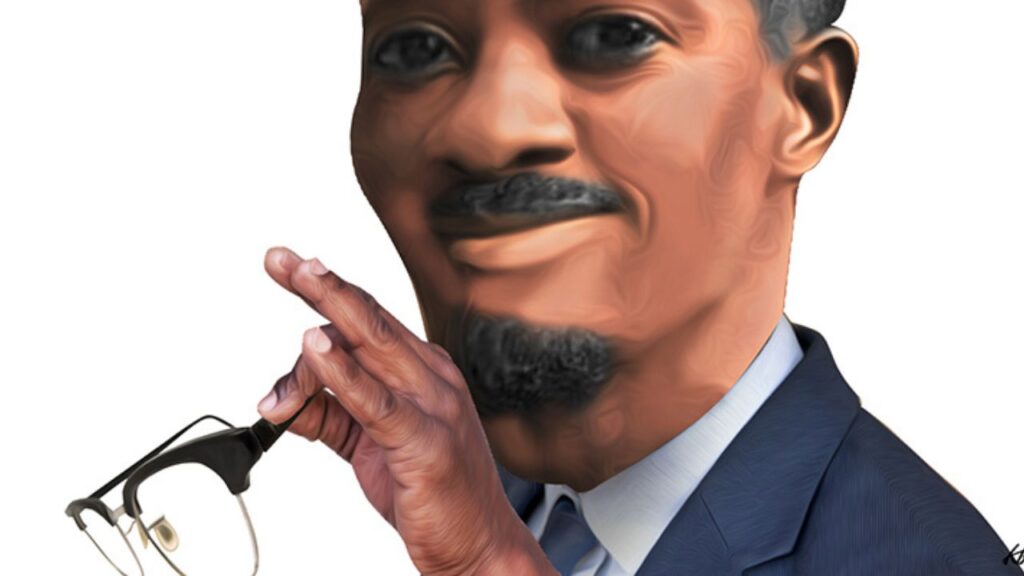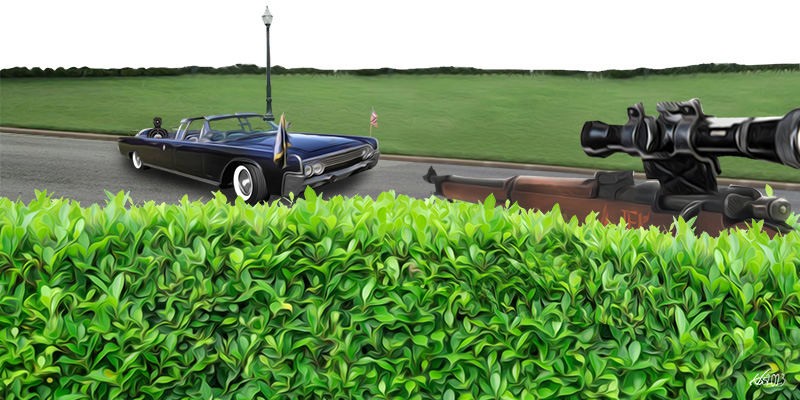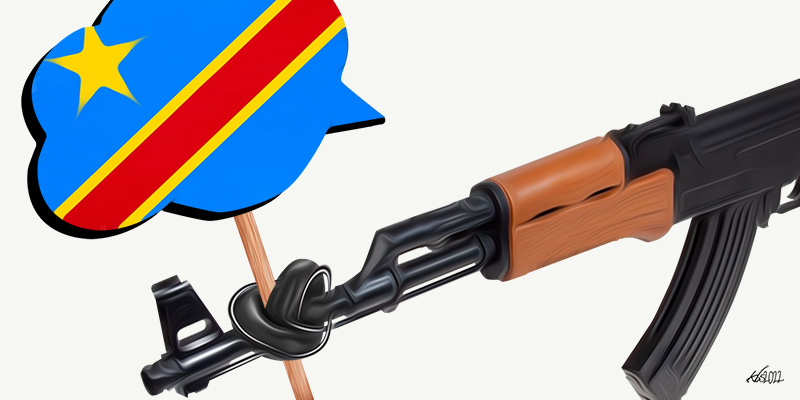In December 2019, Kennedy Ombima, better known by his stage name King Kaka, released a new song called Wajinga Nyinyi (You Fools) that caused ripples nationwide. This incredibly popular song not only sought to speak truth to power, but also highlighted the state of the nation – how it has been captured by endemic corruption, inept governance and noxious ethnic politics. Wajinga Nyinyi was not only bravely rendered, it trended for days, took the country by storm, and excited a deeply frustrated citizenry.
Since its release, it has spawned similar protest songs, with other artists releasing renditions of the song. Although other artists, such as Eric Wainana of Nchi ya kitu kidogo fame (A country of petty corruption), Charles Njagua aka Jaguar of Kigeugeu (hypocrisy), (the artist is today the Jubilee Party MP for Kamukunji constituency in Nairobi County), Gidi Gidi of the Unbwogable (Unbeatable) beat, among others, released popular “protest” songs a while ago, there was something different about Wajinga Nyinyi that caught the attention of Kenyans, especially the youth.
The song highlighted the Jubilee government’s multiple failures, empty promises and its “mortgaging” the country to China through reckless borrowing. Why did this song cause so much hue and cry, yet King Kaka did not speak about anything that we did not know already? What made this song so attention-grabbing and catchy?
First, the song captured a raft of issues that have sadly become a defining feature of the our politics: theft, tribal politics, incompetent leadership, bad religion, bad church, rogue clergy, indecent public behaviour, lack of role models, lack of integrity, youth unemployment, drug and substance abuse, a compromised and ineffective judiciary, poor treatment of teachers and hospital staff, among other ills.
The song highlighted the Jubilee government’s multiple failures, empty promises and its “mortgaging” the country to China through reckless borrowing.
Secondly, and more importantly, the song did not just rap away these issues, but it sought to directly engage Kenyans by calling them out for their apparent foolishness and squarely putting the blame on them. The song blamed Kenyans for perpetually voting in bad leaders based on tribal bigotry and money.
Third, the song urged Kenyans to elect competent leaders so that they can hold them to account through exercising their power of the ballot.
Fourthly, because the song was delivered in the language of the youth and by appropriating simple but popular narratives, it struck a chord and affected the conscience of Kenyan youth, the most disenfranchised and restless constituency.
“I think the song stirred not just our minds, but also our conscience and made us look really foolish,” said Willis Odhiambo, a Nakuru County youth. “The leaders we elect through the politics of manipulation and ‘mtu wetu’ syndrome (the politics of our man) display a condescending attitude towards us the electorate as soon as they have been sworn in. They will then go on a looting spree so I think the song was a call out to all our elected leaders that it is no longer business as usual.”
Odhiambo also said that the song was a wake-up call to the powers that be that “vitu kwa ground ni different” (on the ground, things are different). “The song is a passionate appeal to my generation to vote properly if we are to effect the desired change we so badly need.”
Another youth, Grace Naliaka, said the song called for a non-violent youth revolution, “one that calls us to take our civic duties, to soul search on our future that has been stolen by the old geezers. This song pierced both our personal and collective conscience and for the first time, I thought very seriously about my civic duties. So for me, the song was about us the youth to see beyond tribe and elect leaders of integrity. We must refuse to whine and rap away our frustrations, but take control of our destiny by changing how we vote and who we vote for.”
Naliaka observed that the independence generation had messed up the future of the millennials. “By belting out the lyrics, King Kaka had read the riot act to the inept corrupt-ridden Jubilee government.”
I think the song was not just about speaking truth to power; it also called for deep introspection. Given that the Kenyan electoral psychology and sociology is a study in ethnic mobilisation, the lyrics pricked Kenyans where it mattered most.
In the book It’s Our Time to Eat by Michela Wrong, Kenyan politics is characterised as the politics of tribe and belly politics through primitive accumulation of wealth, and by the looting of public coffers. As such, during every election cycle, the electorate goes out to elect leaders based on a tribal matrix.
The status of Kenyan youth, like many youth on the African continent, raises huge concerns for those who care about this large and significant constituency that happens to wield tremendous voting power. Africa is a young continent with a teeming youthful – but deeply frustrated and unemployed – population. Nearly 80 per cent of Kenya’s more than 40 million people are under the age of 35. Yet, a significant majority of the youth in Kenya operate in a hostile environment, where the dominant issues they grapple with include, but are not limited to, unemployment, poverty, unequal opportunities (economic and/or otherwise), ethnic bigotry, marginalisation, HIV/AIDS, drugs and substance abuse, mental health issues, crime and violence.
Coupled with the crippling unemployment is the fact that the average young person in Kenya is a victim of a gerontocratic economy and polity, where the tendency by the government is to give most public jobs to retirees and political cronies. King Kaka derides both President Uhuru Kenyatta and Parliament about this apparent gerontocracy when he says “youth ni Moody at 90 and Gikonyo at 80”.
Moody Awori, a veteran politician born in 1927 who served as Kenya’s ninth Vice President from 2003 to 2009, was recently appointed at the age of 91 to serve on the board of the Sports, Arts and Social Development Fund. He and others like Karuthi Gikonyo and many others who are in their sunset years keep being re-appointed to plump public jobs. The appointment of former Othaya MP Mary Wambui, 69, to chair the National Employment Authority, for example, angered many Kenyan youth, even though a court annulled her appointment on the grounds that she was not qualified for the job.
Decisions on pubic matters that affect youth are therefore made by people who are out of touch with the realities of young people in the 21st century. At best, the political elite pay lip service to the youth question, but more often than not, they tend to treat the youth as outsiders in the decision making process, as a group on permanent hold, waiting to be leaders of tomorrow – a tomorrow that has turned out to be a mirage. And if that tomorrow comes, it only does for the old and the frail, and the already very wealthy.
Coupled with the crippling unemployment is the fact that the average young person in Kenya is a victim of a gerontocratic economy and polity, where the tendency by the government is to give most public jobs to retirees and political cronies.
In the political arena, the youth are, at worst, treated as objects to be manipulated and used or, at best, as junior partners. Often, decisions affecting them are made in their absence; their job is only to comply. The youth’s inability to access power at the centre has led to their exclusion and marginalisation. Because of this exclusion, there is a general sense of hopelessness, restlessness and uneasiness, leading to increased vulnerability.
The Jubilee Party government rode to power in 2013 with a promise to create millions of jobs for the youth. Seven years later, the poor youth have realised they have been played, that their role is to be coerced and manipulated by political henchmen.
The youth are not only perceived as malleable and vulnerable to ethnic machinations, but sadly, also to religious manipulation. It is a public secret that some Kenyan youth have been lured to join religion-inspired terror groups such as Al Shabaab. Their recruitment into these terror groups is often the result of unaddressed historical injustices and grievances, as well as the marginalisation of the youth and victimisation by the security agencies. In a situation where the youth feel neglected and unwanted, religious radicalisation becomes the norm and finds its niche among a terrorised lot that has been denied opportunities.
Politicians eating the youth’s future
According to Godwin Murunga, a, Kenyan historian working for CODESRIA in Dakar, Senegal, the framing of the youth as a risky category is “problematic” because there is compelling evidence of the potential of youth to innovate outside of the state. Murunga says that Kenyan youth operate in an environment full of disparities, where progress and regression alternate in unpredictable ways. He says while there are certain segments of Kenyan society that benefit from the limited economic prosperity enjoyed in Kenya and East Africa, especially in the last one or so decades, these benefits are unevenly distributed.
Even as the Kenyan state has excluded the youth from governance and decision-making platforms, the political elites have continued to treat the youth and the general populace with arrogance and disdain. This is not surprising at all, given that the history of Kenya is one of pork-barrel politics, where the youth are suspended in time – they are told that they are the leaders of tomorrow, not of today. Hence money and resources meant for youth is squandered or redirected elsewhere.
These elites thrive on intimidation and threats to scare away anyone pointing a finger at them. The threat by Governor Anne Mumbi Waiguru to sue King Kaka is the latest example. (In his song, King Kaka wondered why Waiguru was still in office, given that she had presided over the loss of millions of shillings meant for the National Youth Service (NYS) when she was the Devolution Cabinet Secretary.
Tracy Namunyak from Kajiado County points out that state officials thrive in discrediting harassing, intimidating, silencing and issuing threats to their critics. Namunyak says Kenyans could be angry with Waiguru because “she ate our future”.
Rogue clerics who steal from the mouths of babes
Not only are youth manipulated by the political class, they are also manipulated by religious leaders. King Kaka criticises the Kenyan church and its clergy who wield tremendous power in this country and who seek to influence not just government policy, but also the citizenry through subtle coercion and threats of fire and brimstone in hell. The clergy, just like the political elite, is deeply condescending towards the Kenyan public and the youth.
Apostle James Maina Ng’ang’a of Neno Evangelism, who is the epitome of a (Pentecostal) cleric gone rogue, is mentioned in Kaka’s lyrics. His arrogance, sense of entitlement, abusive language, and condescending attitude towards women and youth mirror how politicians treat Kenyans. The artist criticises the clergy and its apparent love of money and equates its greed to that of the political class.
Ng’ang’a is brash, rude and reckless. Just like the Kenyan politician, he treats his huge followers with callousness and disdain. Just like the politicians, religious leaders treat Kenyans with madharau (contempt). Ng’anga once asked a church member why she wore cheap sneakers and scolded another for her inability to raise Sh6,000 for her children’s school fees. In one of his latest outbursts, he equated King Kaka to a tout.
A rogue pastor who mirrors Ng’ang’a is Gilbert Deya, who claims to have 36,000 followers in the UK. Deya established the Gilbert Deya Ministries International in 1997. His organisation claims that Deya is able to help infertile, post-menopausal women to conceive through the power of the Holy Spirit and special prayers. These outrageous claims turned out to be a child-trafficking racket.
In 2006, Deya was arrested in Edinburgh, Scotland (where he had moved to in a bid to hide from Interpol) on charges of kidnapping and trafficking of children. He protested his innocence, claiming that the miracles that God performed through him were beyond human understanding and that no man can explain them except God. When he was extradited to Kenya, he was detained for nine months at Kamiti Maximum Prison and then released in May 2018 on a Sh10 million bond.
King Kaka criticises the Kenyan church and its clergy who wield tremendous power in this country and who seek to influence not just government policy, but also the citizenry through subtle coercion and threats of fire and brimstone in hell.
Self-proclaimed Prophet David Edward Owuor, who tells his followers that he is two in one (Elijah and Moses), could rightly be described as Kenya’s spiritual president. Prophet Owuor is a man who loves pomp and power. He is authoritative and has cultivated a personality cult and mystique about him.
More importantly, he is condescending to other Kenyans, be they clergy or otherwise. He is a master of spiritual and emotional manipulation; he often threatens his followers with eternal damnation, death, earthquakes and floods. Prophet Owuor demands absolute adoration from his followers and has created a religious-political personality cult around himself. Any contrary opinion or critic of the mightiest of the mightiest attracts curses, death threats, road accidents and severe illnesses like cancer.
The clergy no longer speaks the language of social justice, of the poor and vulnerable. Religious leaders, just like politicians, treat the youth the same way politicians do. It would seem use-and-dump is their stated policy.
Patriarchy and bedroom politics
In a conservative country like Kenya, political and religious power is the preserve of men. Threats of violence – political, physical and verbal – are not uncommon in the Kenyan public sphere.
For Ng’ang’a, politics is his bedroom, where he has power over the youth and their mothers. He appropriates the patriarchal language of the Bible, colonialism and toxic masculinity. Women’s bodies are sexualised and sex is used to sanctify men’s control over women’s bodies.
By stating to King Kaka that “your mother is my girlfriend”, Ng’ang’a sees women’s place as not just being in the kitchen, but also in his bedroom. If they are not in the kitchen or in the bedroom, then they are in his church, being exorcised of demons and spirit-husbands, who presumably rape women in Ng’ang’a’s fantasies. Even in the underworld, male demons inhibit women bodies, raping them at will, while Ng’ang’a rapes them of their dignity through his toxic theologies of demonic deliverance.
The female body is a site of abuse where toxic theologies are constructed. Women’s bodies are sites of violence, patriarchal control and surveillance. Women’s body parts have also been used by Kenyan politicians and men to insult and abuse others. Nearly a decade since the promulgation of the new Kenyan constitution of 2010, MPs are yet to pass the two-thirds gender rule.
By stating to King Kaka that “your mother is my girlfriend”, Ng’ang’a sees women’s place as not just being in the kitchen, but also in his bedroom. If they are not in the kitchen or in the bedroom, then they are in his church, being exorcised of demons and spirit-husbands, who presumably rape women in Ng’ang’a’s fantasies.
In today’s Kenya, religion has become indistinguishable from politics. In the last two general elections, we have witnessed tremendous cooption of the Kenyan clergy by the political class. The class fundraises colossal amounts of money for churches to win legitimation and respectability, while compromising the very clergy by stifling their voice.
Deputy President William Ruto, who has variously proclaimed himself to be a born again Christian, has caused quite a stir through his frequent church fund-raising activities, where he has donated humungous amounts of money to different churches. In many such events and during electioneering periods, politicians scramble for prayers and votes, mostly in churches. Images of President Uhuru Kenyatta and his deputy being prayed for and anointed with special oil in churches have become the norm in Kenyan political, religious and social scenes.
The rise of protest music among youth
While the youth are being marginalised in the political arena and in church circles, they have turned to reclaiming the creative and performing arts to protest their exclusion. Through the power of hip-hop lyrics, contemporary songs and poetic music, the youth are seeking not just to contest their marginalisation, but to also challenge, educate, mobilise and organise – to hold the political class and government functionaries, as well as religious leaders, to account through popular entertainment and dramatised narratives.
Protest music has long been recognised as an art form used by the youth to not only fight for their rights and existence, but also to reclaim their voices and to directly appeal to the people’s conscience. Robert Kyalunganyi, aka Bobi Wine, the MP for Kyaddondo East constituency in Kampala, Uganda, has used his talents as a musician to propel himself right into the centre of Ugandan politics. Today, the long-serving President Yoweri Museveni has to contend with Bobi’s soaring popularity in politics and across social circles in Uganda. He has proved to be an irritating itch to Museveni.
While the youth are being marginalised in the political arena and in church circles, they have turned to reclaiming the creative and performing arts to protest their exclusion…and to also challenge, educate, mobilise and organise…
Bobi Wine has done this by giving the youth a practical medium and a new space to express disaffection with the current status quo in Uganda’s political establishment. He offers a critique of power using a language that is accessible, simple and appealing to the youth constituency.
Popular music has the ability to not just prick the powers that be, but also to awaken the consciousness of the citizenry. The youth are carving out spaces for civic engagement outside of the state and church. They have been using social media as spaces for political and social mobilisation.
As the church and government aficionados’ minds remain colonial and static, the youth are moving ahead to recreate and reclaim spaces for themselves. The church, stuck in its colonial framework, is no longer out to save souls and fight for the vulnerable. It doesn’t speak the language of the downtrodden. Today it speaks the language of the oppressor and brutal governments. It is part and parcel of the predatory political class.








